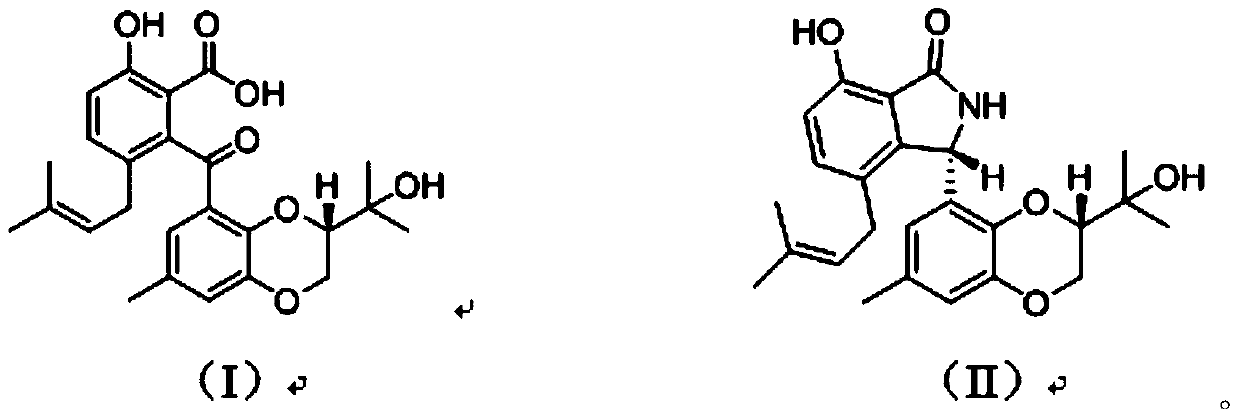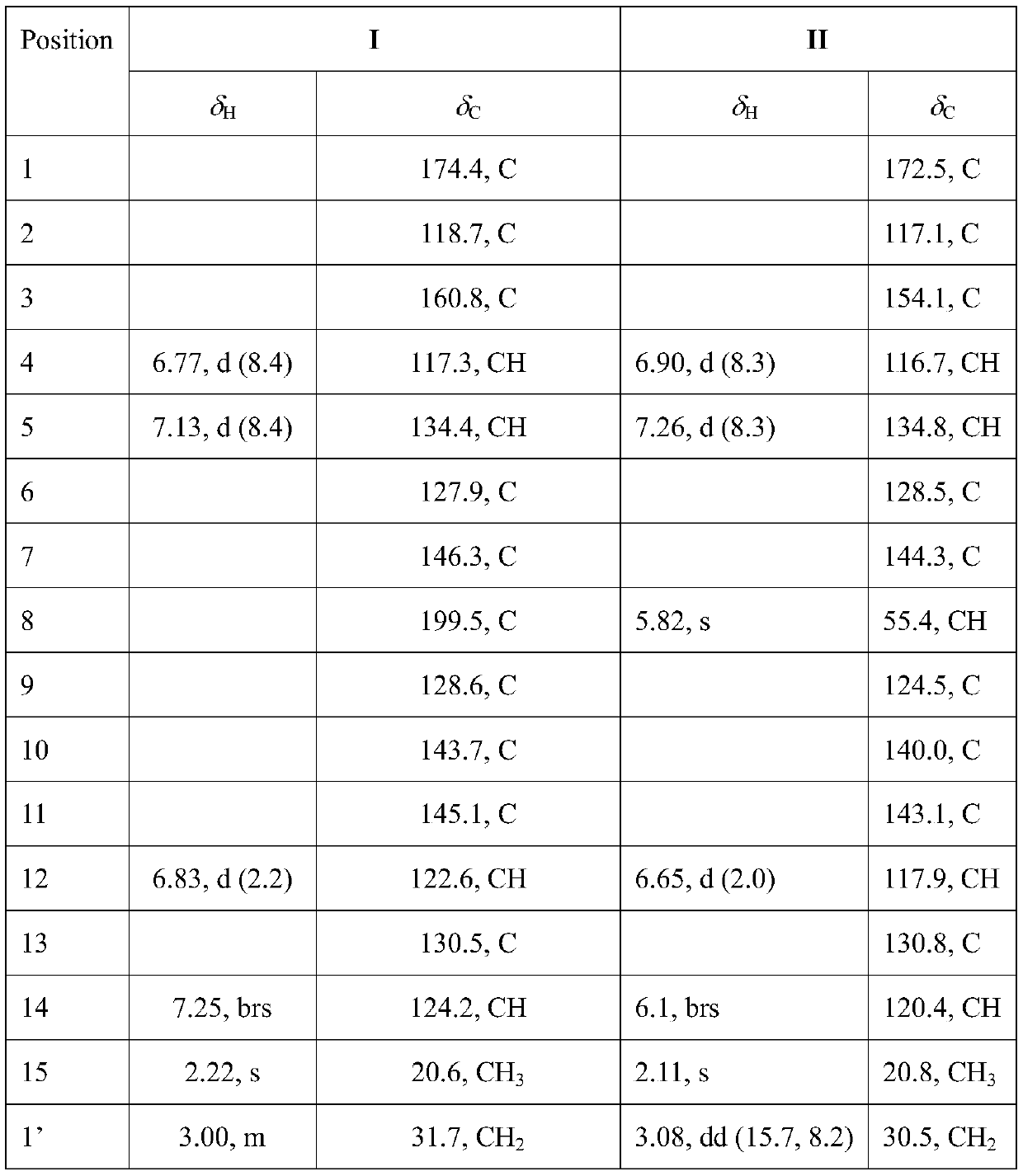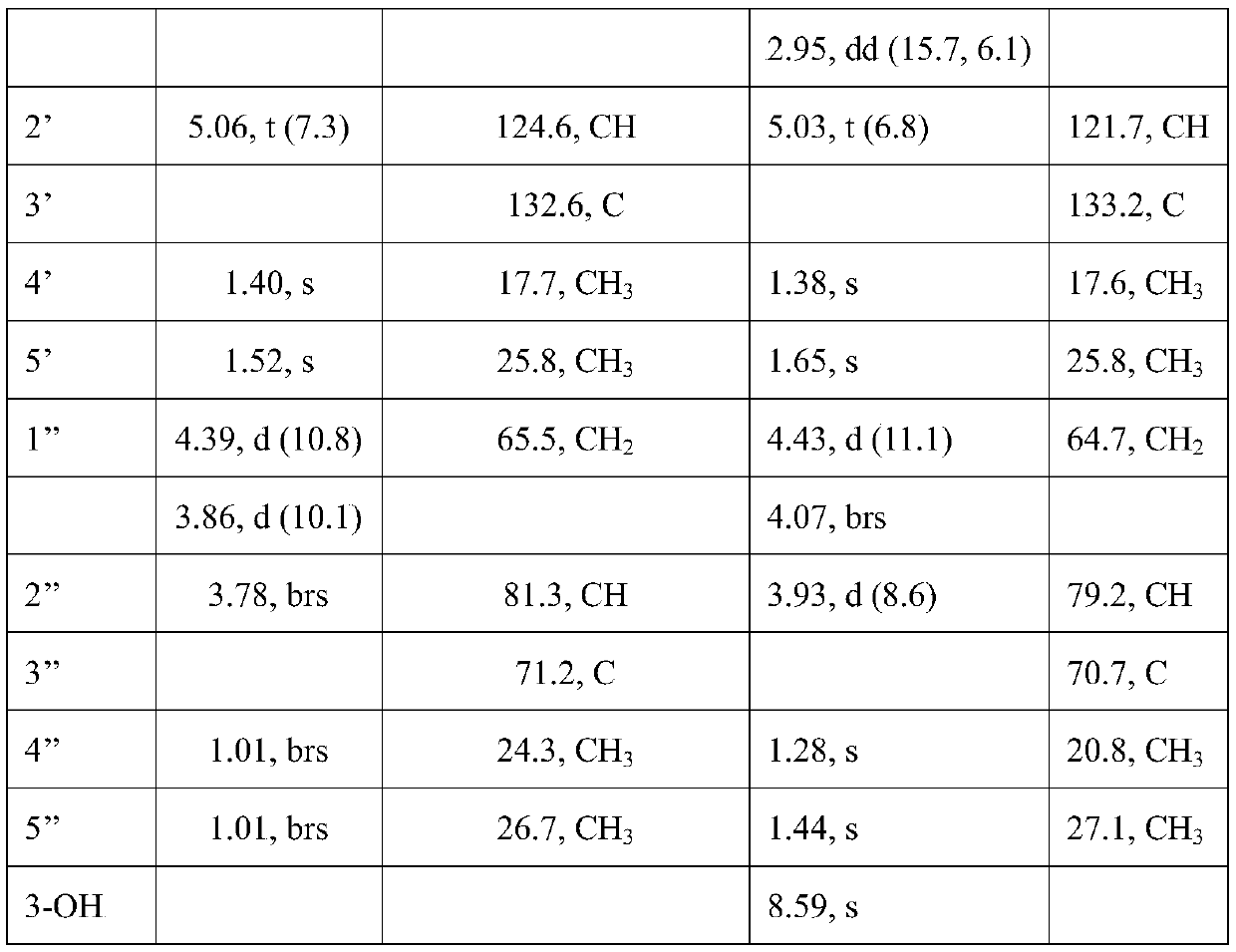A class of benzophenone derivatives derived from marine fungi, their preparation methods and their application in the preparation of anti-tuberculosis drugs
A technology of benzophenones and marine fungi, applied in biochemical equipment and methods, microorganism-based methods, microorganisms, etc.
- Summary
- Abstract
- Description
- Claims
- Application Information
AI Technical Summary
Problems solved by technology
Method used
Image
Examples
Embodiment 1
[0025] A method for preparing benzophenone derivatives derived from marine fungi, wherein the benzophenone derivatives are isolated from the fermentation broth of the marine fungus Diaporthe sp.SYSU-HQ3. The marine fungus Diaporthesp.SYSU-HQ3 was isolated from the fresh leaves of Excoecaria agallocha L., a mangrove plant in the sea area of Zhuhai, Guangdong.
[0026] The marine fungus Diaporthe sp.SYSU-HQ3 was deposited in the Guangdong Provincial Microbial Culture Collection Center (GDMCC) on August 4, 2017, with a preservation number of GDMCC No: 60217 and a classification name of Diaporthe sp. The address of the preservation unit is 5th Floor, Building 59, Compound, No. 100 Xianlie Middle Road, Guangzhou City.
[0027] The concrete preparation method of described benzophenone derivatives is as follows:
[0028] S1. Seed solution culture of marine fungus Diaporthesp.SYSU-HQ3: insert marine fungus Diaporthesp.SYSU-HQ3 into the seed medium, and cultivate at 180rpm on a shak...
Embodiment 2
[0032] Structural analysis of compounds I and II was carried out to obtain the following experimental data:
[0033] Compound I:C 25 h 28 o 7 , HRESI-MS: 463.1752[M+Na] + (calculated value 463.1757).
[0034] Compound II:C 25 h 29 NO 5 , HRESI-MS: 424.2123 [M+H] + (computed value 424.2124);
[0035] The NMR data of compounds I and II are shown in Table 1.
[0036] Table 1. NMR data of compounds I and II (CDCl 3 , 500MHz / 125MHz,ppm)
[0037]
[0038]
[0039] According to above-mentioned data result, confirm compound I, the structural formula of II is as follows:
[0040]
Embodiment 3
[0042] Compounds I and II inhibit Mycobacterium tuberculosis protein tyrosine phosphatase (MptpB) activity screening experiment.
[0043] Using p-nitrophenyl phosphate (pNPP) as a substrate, it was carried out in 50 mM Tris, 100 mM NaCl buffer (37° C., pH 7.0). pNPP was enzymatically hydrolyzed into p-nitrophenol by mPTPB, and the enzyme activity was calculated by measuring the change of its absorbance at a wavelength of 405nm with a UV-Vis spectrophotometer. The initial reaction system was 200 μL, which contained 5 μL of enzyme, 2.5 mM substrate pNPP, and different concentrations of inhibitors. 5 minutes after the start of the reaction, start to measure the absorbance at a wavelength of 405 nm, and read the absorbance for 5 minutes continuously.
[0044] Use the following formula to calculate enzyme activity: inhibition rate (%)=[(A 0 –A) / A 0 ]×100%, where A 0 The absorbance change value of the blank control, A is the absorbance change value of the sample. Determine the ...
PUM
 Login to View More
Login to View More Abstract
Description
Claims
Application Information
 Login to View More
Login to View More - Generate Ideas
- Intellectual Property
- Life Sciences
- Materials
- Tech Scout
- Unparalleled Data Quality
- Higher Quality Content
- 60% Fewer Hallucinations
Browse by: Latest US Patents, China's latest patents, Technical Efficacy Thesaurus, Application Domain, Technology Topic, Popular Technical Reports.
© 2025 PatSnap. All rights reserved.Legal|Privacy policy|Modern Slavery Act Transparency Statement|Sitemap|About US| Contact US: help@patsnap.com



